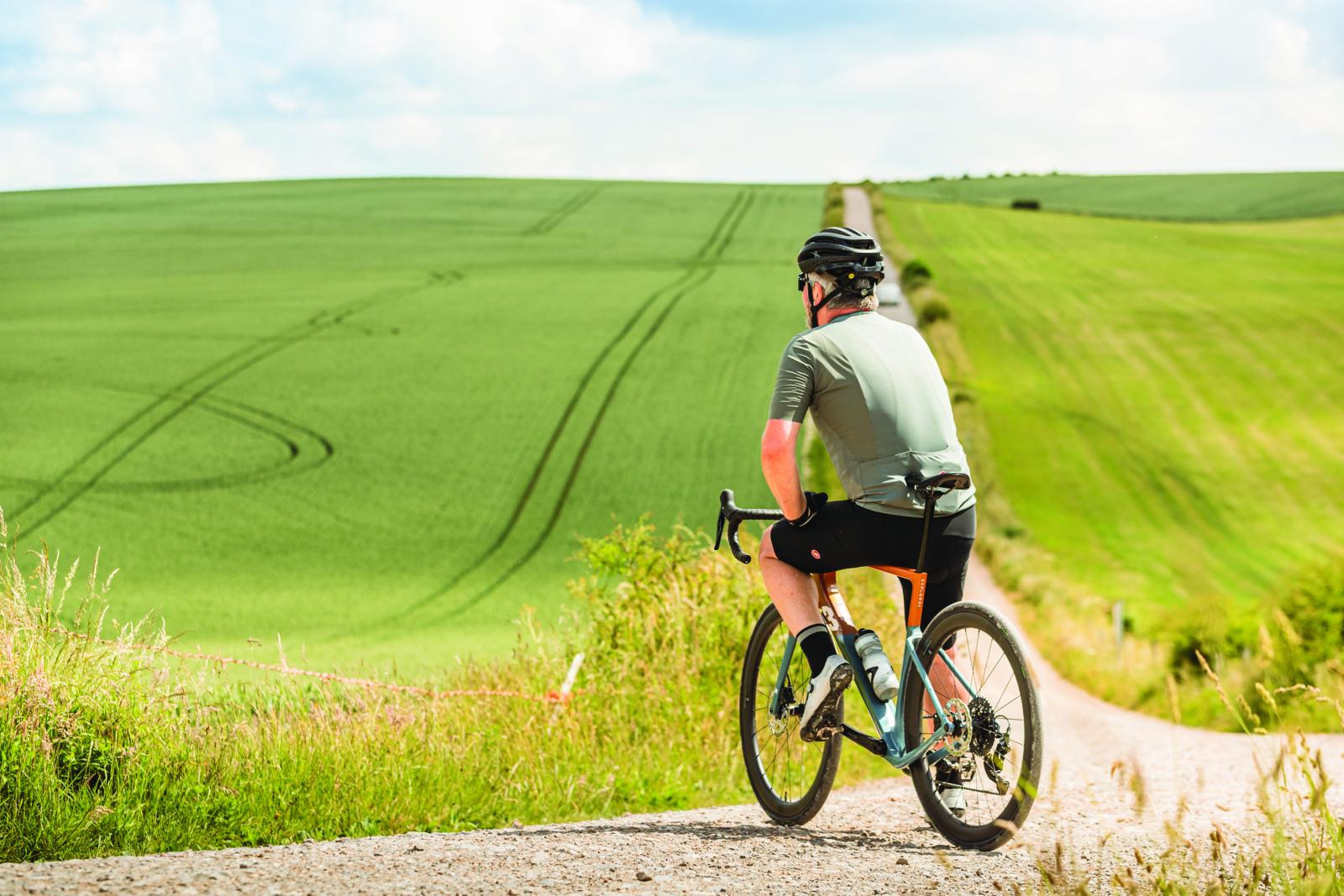Setting up the Bryton Aero 60 is straightforward – just pair it with Bryton’s Active app (iOS and Android) and your phone, to establish links to the software you wish to use, such as Strava, TrainingPeaks, etc. You can then pair to BLE and ANT+ sensors, including the included cadence, speed and heart rate strap.
Although most of the set-up can be done over WiFi, you can perform the set-up without it. However, using the five buttons on the unit to navigate can be clumsy and time-consuming.
Bryton Aero 60 functions
The Aero 60 has more than 78 functions. Most are bike/nav-centred, but it does have some additional functions displayed on the screen, such as call, email or message notifications from your phone.
The Bryton Active app is one of the better around, the routing is great and it offers structured in-app workouts too.
Also within the app is the ability to customise screens with up to 10 data fields per screen (save the map screen), and you can even have two different bike settings. I was able to set up my SRAM and Shimano bikes separately and the Aero 60 found both eTap and Di2 signals.
The route planner within Bryton’s app is simple and intuitive – you can specify road or mountain, and you’ll be presented with a fully detailed option from OpenStreetMap.

It’s then a case of simply highlighting points on your route (via your smartphone’s touchscreen) and the software will create a track, save it, then upload to the Aero 60 via WiFi.
If you’d prefer routes from Komoot or Strava, then they have to be uploaded as .gpx files, which isn’t something you can get straight from Strava’s app.
The Bryton app also works well with the sensors included in the package (speed, cadence, HRM strap) and had no trouble finding my wrist-based HRM and Wahoo Tickr strap.
Bryton Aero 60 in use
On first appearances, you’d be forgiven for thinking the Aero 60 is just the much cheaper Bryton Rider 450 but in a fancier case, but the operating speed and GPS pick-up here is between 66 seconds and 80 seconds over multiple rides, showing the Aero 60 to be moderately faster.
The map-loading times are around the same as the GPS signal-finding, so pre-ride delays are reasonable. Although on my first start-up, it relocated the GPS from its last known point and logged it as a ride of 30,906km, which thankfully I deleted from Strava and the Bryton app because it would have seriously put my ride tracking out of whack.
Navigation with the Aero is reasonable, and the monochrome map is reminiscent of Wahoo’s Bolt and Lezyne’s Mega XL, which also look very similar when it comes to typeface and resolution (albeit on a much smaller screen).
The turn instructions are good at informing you of upcoming turns and counting down the distance. Where it falls down, however, is that if you deviate from your planned route, the Aero 60 won’t reroute you back onto your track, so it’s down to you to get yourself back.
Also, because the map screen doesn’t scroll, you have to rely on zooming in and out to try to find your way back, but if you zoom out you will lose definition on the maps.
Another big frustration with the Aero 60 (as with the Bryton Rider 450) is the lack of an obvious sign that the unit is recording. It displays speed and map position, even navigation points along a route, but you won’t always know if it’s recording your ride.
On one of my 70km test rides, I used the Bryton alongside a couple of rivals and only realised after 30km that the Aero wasn’t recording.

Button layout can be a little confusing – the five buttons switch the power on and the backlight on or off. On the base, the right-side buttons are multi-function, while the top button starts recording, sets a lap, and acts as the OK button for setup functions.
The lower button is Pause, Stop and Return for setup, or a single press to access the Menu screen. On the left, the upper single button flicks between screens and the bottom two buttons zoom in and out on the map or scroll on set-up pages.
The hardware design should give Wahoo’s aero-optimised Bolt a run for its money. With a slightly shallower case, similar wedge shape and flush-fitting mount, it certainly looks good, and the golf-ball-like dimpled underside is a nice nod to aerodynamics too.
Battery life for the Bryton Aero 60 is a claimed 32 hours, and connected to gearing, power and HRM, plus navigating, I was getting in excess of 20 hours. 32 hours could be achieved if you were using the Aero 60 as a bare-bones recorder.
Bryton Aero 60 overall
At £200, the Aero 60 is decent value and it does perform a bit better than the (£50) cheaper Bryton Rider 450. But like its cheaper sibling, it’s not the easiest to use and can be a bit buggy – I had a couple of GPS dropouts mid-ride as the unit hung up and required a button-restart when connecting to WiFi.
The Aero 60 is so very nearly a great product, and hopefully firmware updates will cure some of the buggy moments, but, as it stands, it’s merely just another okay GPS unit.
Product
| Brand | bryton |
| Price | 200.00 GBP |
| Weight | 70.2000, GRAM () - |
Features
| br_smartphoneNotifications | yes |
| br_screenType | black_and_white |
| br_connectivity | antPlus |
| Features | Memory: 300 hours of riding In the box: Bar mount, cadence sensor, heart-rate strap, speed sensor |
| br_dimensions | 52mm x 83mm x 18mm |
| br_batteryLife | 32 hours (claimed) |
| br_waterResistance | IPX7 |
| br_screenDimensions | 35mm x 48mm |
